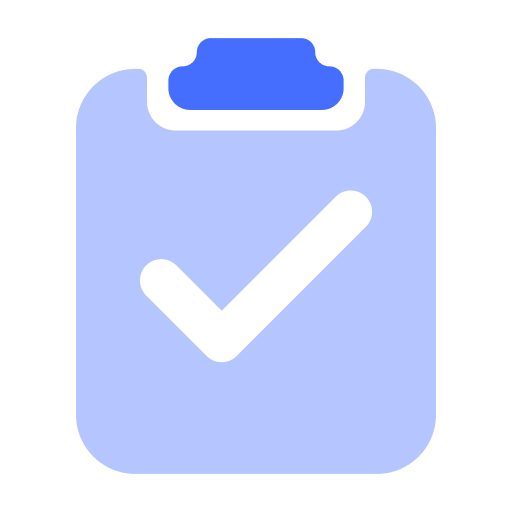

The Ultimate Nursing Report Sheet Guide - Free Downloads!
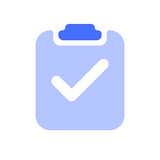
As a nurse, you know the importance of clear and concise communication, especially when it comes to patient care. Nursing report sheets play a vital role in ensuring seamless handovers between shifts, ultimately contributing to improved patient outcomes. However, navigating these sheets can sometimes feel overwhelming, especially for new nurses.
What are Nursing Report Sheets?
Nursing report sheets are standardized forms used to document a patient's condition, including vital signs, medications, treatments, and any relevant observations. They serve as a communication tool between nurses, ensuring continuity of care throughout the patient's journey.
Benefits of Using Nursing Report Sheets:
- Improved patient care: Clear and accurate documentation facilitates better communication and collaboration among healthcare professionals, leading to improved patient care.
- Enhanced safety: Reporting potential risks and concerns helps identify and address issues promptly, ensuring patient safety.
- Reduced errors: Standardized formats minimize the risk of errors and omissions associated with free-form documentation.
- Increased efficiency: Pre-structured templates save time and improve efficiency during shift changes.
Essential Components of a Nursing Report Sheet:
- Patient demographics: Basic information like name, age, diagnosis, and admitting date.
- Vital signs: Temperature, pulse, blood pressure, respiratory rate, and oxygen saturation.
- Medications: Current medication list, including dosages, frequencies, and routes of administration.
- Treatments: Treatments received and planned, including interventions like dressing changes, oxygen therapy, and suctioning.
- Laboratory and diagnostic reports: Summary of recent tests and results.
- Neurological status: Level of consciousness, orientation, and any neurological deficits.
- Pain assessment and management: Description of pain, pain score, and current pain management strategies.
- Fluid intake and output: Total intake and output for the shift.
- Activity and mobility: Level of independence and assistance required for daily activities.
- Skin integrity: Assessment of skin condition and any pressure injuries.
- Nutritional status: Dietary intake and any nutritional concerns.
- Discharge planning: Current discharge plan and any anticipated needs.
Tips for Using Nursing Report Sheets Effectively:
- Complete the sheet comprehensively and accurately.
- Use clear and concise language.
- Document all relevant observations and concerns.
- Proofread the sheet carefully before handing off to the next nurse.
- Ask questions and clarify any uncertainties.
- Utilize standardized abbreviations and terminology.
By mastering nursing report sheets, you can enhance communication, improve patient care, and ensure a smooth and safe transition between shifts. Remember, accurate and efficient reporting is not just a good practice, it's a vital aspect of providing quality patient care.
10 Free Nursing Report Sheet Downloads
Our report sheets are used extensively throughout health systems across the country.
- Download and print PDFs, or edit in Google Docs/Microsoft Word.
- 1-4 patients per sheet, with portrait and landscape options.
- SBAR and Brain format: Perfect for Med-Surg, ICU, Tele, Step-Down, and ER units.
1. Full-Size SBAR Nurse Report Sheet

- Perfect for new grads and nursing students
- Fly through report by circling options instead of writing everything
- 1 patient per sheet
- SBAR format
- Great for all units
2. Brain Nursing Report Sheet Template

- Brain format
3. ICU Nurse Report Sheet

- Great for ICU
4. Mini SBAR Nursing Report Sheet

- 3 patients per sheet
- Quick report taking with circling options
- Great for med surg and tele units
5. 4 Patient Nurse Report Sheet

- 4 patients per sheet
6. Brain Nursing Report Sheet

7. 2 Patient Landscape Nurse Report Sheet

- 2 patients per sheet
8. 3 Patient SBAR Nurse Report Sheet

9. Full-size Nurse Report Sheet Template

10. History and Physical Template

- H&P format
- Great for nurse practitioners and NP students
Free Downloads!
Preparing for accreditation: how electronic clinical tracking simplifies compliance for nursing programs.
Accreditation is one of the most critical aspects of running a nursing program. It ensures that the education provided meets national standards, preparing students for professional practice and helping schools maintain their reputation. However, managing the accreditation process can be overwhelming, particularly when it comes to documenting clinical hours, competencies,
How Nursing Educators Can Help Improve Their Students' Time Management Skills
Time management is an essential skill for nursing students, as it directly impacts their ability to succeed both academically and clinically. Effective time management not only helps students meet their educational goals, but also prepares them for the fast-paced, high-stakes environment of healthcare. Nursing educators play a critical role in
How to Give an Effective Nursing Report: A Comprehensive Guide
Giving a nursing report is a critical task that ensures continuity of care, patient safety, and effective communication between healthcare professionals. Whether you're a seasoned nurse or just starting in the field, mastering the art of giving a thorough and concise nursing report is essential. This guide will walk you
Leveraging Data and Analytics in Nursing Education
Data and analytics continue to enhance outcomes and refine teaching practices in nursing education. By utilizing these technologies, educators can gain deep insights into student performance, tailor instruction to meet individual needs, and ultimately produce more competent and confident nursing professionals. 🏫Learn more about NurseTasks for educators and institutions. The
Free Nursing Templates
There’s no question that nursing school is challenging. So we’re here to help alleviate some of that burden.
Below you will find several fillable templates for drug cards, concept maps, and care plans - all for free.
- No email required
- No hidden fees
- No limitations
- No strings attached
Available Templates
Below you will find three templates created by Unbound Medicine for your personal use.
Drug Card Template
Care Plan Template
Concept Map Template
Find The Answers
You’ve got the free templates, but now you need the tools to fill in the blanks. Successfully study and complete assignments with our top-rated resources.
Free Drug Guide Access
Davis’s Drug Guide is available for a 14-Day Trial through your App Store. Frequently updated and loaded with personalized tools such as highlighting and tagging, there is a reason this mobile and web resource has a five-star rating.
How To Fill Out A Drug Card
Learn how a nursing student fills out drug cards confidently by watching Nursing Influencer Jackie Blanton’s quick and easy drug card tutorial.
Where To Find Concept Map and Care Plan Answers
Watch how Nursing Central can be reliably used to locate all of your answers in one place.
Nursing Central Discount
Available for download on your mobile devices and website access; Nursing Central is your one-stop resource for disease, drug, and test information. It includes a leading dictionary, literature searching, and a study system.
Institutional Access
Learn more about implementing Nursing Central into your program or inquire about group sales here.
All Formats
Table of Contents
5 steps to create a nursing assignment sheet, 10+ nursing assignment sheet templates in doc | pdf, 1. nursing students assignment activity sheet template, 2. nursing students assignment sheet template, 3. nursing staffing assignment and sign in sheet template, 4. basic nursing student assignment sheet template, 5. nursing unit assignment sheet template, 6. nursing program clinical assignment sheet template, 7. nursing assignment sheet template, 8. standard nursing student assignment sheet template, 9. nursing assignment cover sheet template, 10. professional nursing assignment cover sheet template, 11. simple nursing assignment cover sheet template, sheet templates.
For assignments to be successful, you need to determine the needs of both nurses and patients. Nursing assignments, usually help to determine the daily activities of the nurses, the patient meets and assessments, coordinate different shifts and maintain a specific length of working hours. To meet this challenge of preparing nursing assignment sheets, you can take the assistance of sheet templates and learn the process eventually.

Step 1: Gather Information
Step 2: determine the process, step 3: set shift priorities, step 4: evaluating success, step 5: keep updating.
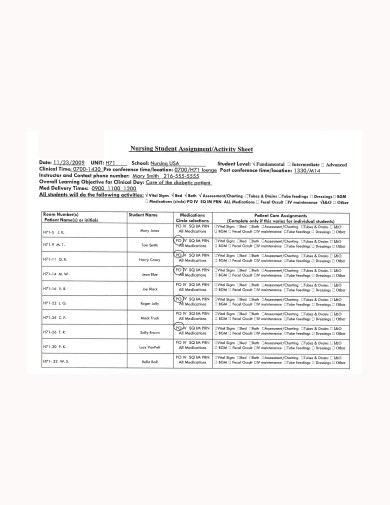
More in Sheet Templates
Nursing home newsletter template, nursing home logo template, nursing home social media template, nursing home patient intake form template, nursing home poster template, nursing home inquiry form template, nursing home resident satisfaction survey template, nursing home nursing staff complaint form template, nursing home admission application form template, nursing home flyer template.
- 43+ Spreadsheet Examples in Microsoft Excel
- 22+ Job Sheet Templates & Samples – DOC, PDF, Excel
- 11+ Retirement Budget Worksheet Templates in PDF | DOC
- 30+ Printable Timesheet Templates
- 14+ Blank Spreadsheet Templates – PDF, DOC, Pages, Excel
- 20+ Sample Answer Sheet Templates
- 10+ Cash Accounting Templates in Google Docs | Google Sheets | Excel | Word | Numbers | Pages | PDF
- 10+ Profit Margin Templates in Google Docs | Google Sheets | Excel | Word | Numbers | Pages | PDF
- FREE 10+ Research Information Sheet Templates in PDF | MS Word
- 10+ Revenue Cycle Management Templates in Google Docs | Google Sheets | Excel | Word | Numbers | Pages | PDF
- 17+ Run Sheet Templates – PDF, DOC
- 16+ Printable Preschool Worksheets
- 36+ Activity Plan in Google Docs | Pages | MS Word | Editable PDF | Publisher | PDF
- 10+ Employee Attendance Sheet Templates in PDF | Word Google Docs | Pages
- 5+ Recruiting Spreadsheet Templates in PDF | DOC

File Formats
Word templates, google docs templates, excel templates, powerpoint templates, google sheets templates, google slides templates, pdf templates, publisher templates, psd templates, indesign templates, illustrator templates, pages templates, keynote templates, numbers templates, outlook templates.

A new patient-acuity tool promotes equitable nurse-patient assignments
Have you ever struggled to classify a patient’s acuity level? If so, you’re not alone. Have you ever looked at your patient assignments and wondered, “Why are the assignments so unfair? How will I care for all my patients effectively?” Again, you’re not alone.
Most nurses expect patient assignments to be equitable, with each nurse bearing a fair share of the workload so all patients can receive excellent care.
Nurses’ job satisfaction depends partly on their workload and their perceived ability to deliver high quality care. Nurse-sensitive indicators (including pressure ulcers, falls, medication errors, nosocomial infections, pain management, and patient satisfaction) depend largely on nursing care and are affected by nurses’ ability to recognize and intervene when a patient’s condition changes. Nursing workloads directly influence a nurse’s ability to assess thoroughly and promote excellent patient outcomes. When patient assignments aren’t equitable, nurses may feel inadequate and frustrated.
Problems also can arise when all nurses are assigned the same number of patients without regard for acuity levels. Yet determining patients’ acuity to promote more equitable assignments can be challenging. Some hospitals or nursing units use an established acuity tool. Others rely on charge nurses’ judgments of patient acuity.
Our nurses were getting restless
At Indiana University Health Ball Memorial Hospital in Muncie, we moved our progressive care unit (PCU) to a newly constructed area of our regional medical center. A short time later, we noticed increases in patient volumes, comorbidities, device support, and overall acuity. The patients’ nursing-care requirements varied widely, so assigning the same number of patients to all nurses would mean unequal assignments.
Although were using an acuity assessment tool, our increasingly dissatisfied nurses deemed it ineffective. It called for nurses to rank each patient as a 1, 2, or 3 based on their individual perception of the patient’s status or difficulty of care required. But the tool wasn’t providing useful information because nurses’ perceptions varied; also the cultural norm tends to make nurses rate most patients a 2. In addition, when more staff nurses were needed, we lacked an objective measure to make a case for obtaining additional staff. When our hospital tested a new nurse-satisfaction survey, nurses’ discontent with their workload became apparent.
Then a PCU direct-care nurse approached the unit-based council (UBC) and asked for an evaluation of our acuity tool. The nurse manager and UBC agreed that equitable patient assignments and adequate unit staffing could be addressed by improving the tool. Following the Iowa model of evidence-based practice (EBP), the UBC formed a team of staff nurses, charge nurses, unit manager, clinical nurse specialist, and nurse researcher to explore the inquiry.
What the evidence told us
The team’s literature review found a limited amount of research pertaining to acuity tools for PCUs, even though hospital expenses decrease and high-quality nursing care increases when leaders are empowered with better, more detailed knowledge of patient acuity and nursing workloads. A recurrent theme in the literature: nurses’ voices add value to processes and nurses should be involved in assessing their own workloads and making decisions about resources. Evidence also suggested that involving staff in developing an acuity assessment tool would yield a valued, more efficient instrument that could improve nurse satisfaction and job retention.
Formulating a plan
During our literature review, we found a tool to adapt for our adult PCU. On a flip chart in the nurses’ lounge, we displayed our existing tool alongside the new tool we’d revised from the literature search. Staff viewed both tools and provided input into what made a patient’s care difficult, time-consuming, or complex. This gave us a better picture of PCU patients and helped us ensure all tasks were represented, from the least to the most time-consuming. Brainstorming meetings clarified key elements of acuity that guided continued evolution of the new tool.
Tool-development strategies
In our new tool, criteria categories included complicated procedures, education, psychosocial/therapeutic interventions, number of oral medications, and complicated I.V. drugs and other medications. Rating options on the tool run from 1 through 4, with 1 indicating low acuity and 4 indicating high acuity. Ratings are based on nursing time needed to complete a task, emotional and physical energy expenditure required, expertise required, frequency of tasks and interventions, and follow-up assessments related to a specific task. Ratings for all five criteria categories are summed up to obtain a total acuity score for each patient, ranging from 1 to 60. Then the total scores are clustered into acuity category scores, which range from 1 to 4, with 1 being the lowest acuity and 4 being the highest. (See Acuity criteria categories .)
Now we were ready to test the new tool. Initially, charge nurses from each shift tested it with the same patients on different shifts. When we found that scores between shifts weren’t congruent, we tested the tool again, with charge nurses on the same shift assessing the same patients separately. This trial yielded an inter-rater reliability of 85%—an acceptable congruency level across nurse raters.
This trial provided insight into acuity differences between shifts and helped determine how to use the tool. With our previous acuity tool, tasks and procedures of the rater’s shift determined acuity, with no consideration of upcoming tasks or procedures for the next shift. So for the new tool, the team and staff agreed nurses would proactively score acuity for the oncoming shift by calculating current and projected needs and medications.
Measuring outcomes
We identified three outcome measures as indicators of the effectiveness of the new acuity approach.
- First, the team developed an eight-item survey to measure nurse satisfaction with the new acuity assessment process, which nurses completed 1 month before the new process began and then 1 month, 6 months, and 12 months later.
- Next, the team identified items on the standardized annual employee engagement and satisfaction survey, specifically targeting workload and perception of quality of care delivered.
- Finally, we tracked nurse sensitive indicators affected by workload, including falls and hospital-acquired pressure ulcers.
Translating scores into patient assignments
To translate acuity scores into equitable patient assignments, charge nurses collected the acuity tools that direct-care nurses completed for each patient, and calculated total acuity scores and acuity category scores near the end of their shift. Then the charge nurses designed nurse-patient assignments by considering both the category score from 1 to 4 and the total acuity score of 0 to 60 for each patient, aiming to keep category scores balanced across nurses. Charge nurses also considered the geographic location of rooms on the unit, need for continuity of care, and congruency between nurses’ expertise and patient needs. (See Current acuity tool on last page .)
Unit-wide rollout
Before we rolled out the new tool, direct-care nurses on our team provided education to all PCU nurses. Teaching strategies included showing video clips of patient scenarios, presenting case studies so nurses could practice using the tool, and playing a game-show exercise to stimulate discussion of the benefits of acuity scoring. Nurses voiced favorable responses to the new tool, specifically the benefits of empowerment, assurance of quality care, patient safety and satisfaction, nurse retention, and equitable assignments. The team encouraged staff to provide feedback on the new process and expect revisions to ensure its effectiveness and sustainability.
To hardwire the new acuity assessment process, team members rounded on nurses each shift for 1 week and then three times monthly. The team answered questions, audited acuity scores, and coached nurses to achieve a highly standardized approach to scoring. During orientation, preceptors trained newly hired nurses to use the acuity assessment tool.
Charge nurses kept a log of assignments, acuity scores, and overall unit activities, overtime, and informal comments on workload. In huddles held daily for the first week, charge nurses and the nurse manager reviewed acuity scores and the process. A numerical benchmark emerged as an indicator for requesting more staffing, based on total acuity scores and acuity category scores of all patients on the unit.
Evaluation and sustainability
At the end of the first month, scores on surveys of nurse satisfaction with the new acuity assessment process showed marked improvement in nurses’ reports of the equity of patient assignments (7% satisfaction before rollout, 55% satisfaction after) and the consistency with which the acuity assessment process occurred (21% consistency before rollout, 89% consistency after). Almost 80% of nurses reported that completing the new acuity tool wasn’t a waste of time. The team implemented suggestions for refining the process and set a target goal of 85% nurse satisfaction by the 6-month evaluation.
The sustainability plan for year 1 calls for quarterly reevaluation of the acuity assessment process and semiannual reevaluation thereafter, including scoring processes, staffing level benchmarks, nurse satisfaction per survey, and nurse-sensitive outcomes. It also calls for nurses to review reports of outcome data regularly during staff meetings. When revisions are indicated, the team will provide additional education.
As the process of creating ideal nurse-patient assignments evolves, the team will explore the benefits of the synergy model, which matches nurses’ strengths and competencies with patient and family characteristics. The team may conduct qualitative research studies to better understand the complex judgments charge nurses make when creating nurse patient assignments, with the goal of standardizing the process for sustainability and optimal outcomes.
In evaluating the overall projects experience, team members listed lessons learned and captured key ideas to use in future projects. (See Acuity tool: Lessons learned by clicking the PDF icon above). The team validated usefulness of the Iowa model in developing the tool and process, and recommended adopting a model for translating evidence into practice. Nurses on the team reflected that a highly satisfying aspect of the project was identifying a clinical issue and playing an active role in addressing it as valued partners in the change process.
Selected references
Choi J, Choi JE, Fucile JM. Power up your staffing model with patient acuity. Nurs Manage . 2011;42(9):40-3.
Duffield C, Diers D, O’Brien-Pallas L, et al. Nursing staffing, nursing workload, the work environment and patient outcomes. Appl Nurs Res . 2011;24(4):244-55.
Fram N, Morgan B. Ontario: linking nursing outcomes, workload and staffing decisions in the workplace: the Dashboard Project. Nurs Leadersh (Tor Ont). 2012;25(Spec No 2012): 114-25.
Hardin SR, Kaplow R, eds. Synergy for Clinical Excellence: The AACN Synergy Model for Patient Care . Sudbury, MA: Jones and Bartlett; 2005.
Harper K, McCully C. Acuity systems dialogue and patient classification system essentials. Nurs Adm Q . 2007;31(4):284-99.
Titler MG, Kleiber C, Steelman VJ, et al. The IOWA model of evidence-based practice to promote quality care. Crit Care Nurs Clin North Am. 2001;13(4):497-509.
The authors work at Indiana University Health Ball Memorial Hospital in Muncie. Michelle Kidd is a critical care clinical nurse specialist. Kimberly Grove, Melissa Kaiser, and Brandi Swoboda are direct- care nurses in the progressive care unit (PCU). Ann Taylor is nurse manager in the PCU.
29 Comments .
Hello, I would like to request permission to utilize the patient acuity tool in my DNP project.
Hello, I would like to request permission to use this tool as a reference in my BSN assignment.
Hello Kaitlynn, The authors of the article are happy to grant others permission to use the tool. Please be sure to credit the source. Best, Cheryl Mee MSN, MBA, RN, FAAN, Executive Editorial Director, American Nurse Journal
Would like permission to use this tool for our Acute Care Floor in northern MN. Having a lot of the same issues discuss prior to your implementing…. Assignment and staffing inconsistencies, teams of 5 plus, multiple unsafe staffing scenarios. Think this would be a huge help! Thank you!
Hi, Our unit (surgical unit) are currently doing brain storming and gathering ideas on how to improve our nurse:patient assignment. We are trying to develop a patient acuity tool which would suit our patient care environment. Hoping we could reference and use your tools with your permission.
Very much appreciated.
can you share your acuity tool. We are also trying to come up with a solution instead of the admin. staffing by census…..
Can you email me at [email protected] please to discuss? Thanks!
Yes, you may.
Hi, I would love to use this as a reference to adapt an appropriate acuity tool for the medical surgical unit at our hospital. I am hoping to be granted permission to use , with appropriate citations.
Dear Micaela,
The authors of the article are happy to grant others permission to use the tool. Please be sure to credit the source.
Cynthia Saver, MS, RN
Firstly, we would like to congratulate the authors of the New Tool and we wish to be granted to use the tool with citation of the authors. What about Chemotherapy, is it under the complicated IV drugs but it is not specified? Hope to be clarified about it. Thank you.
Ruhaina Ladja,
Thank you for your interest in the acuity tool. I would venture to say chemotherapy would be included in complicated IV drugs, but in the units for which we first developed this tool the nurses did not administer chemotherapy.
Thanks again, Michelle J Kidd, MS, APRN, ACNS-BC, CCRN-K
Hi there, I am seeking permission to utilize this patient acuity tool for our evidence-based project on our IMU/ICU unit. Thank you so much.
The authors of the article are happy to grant others permission to use the tool. Please be sure to credit the source. Cynthia Saver, MS, RN, Editorial director for American Nurse Journal
Does anyone have the contact information for the authors of this tool? I would like to use this tool for my DNP project and need permission to use.
I would like to request fro your permission to utilize this tool for a pilot project initiative in my department.
The authors of the article are happy to grant others permission to use the tool. Please be sure to credit the source. Cynthia Saver, MS, RN, Editorial director for American Nurse Journal.
I am requesting permission to use this tool Thank you
I am requesting permission to use this tool on my Med/Surg floor
Thank you, Tiffany Brisken, BSN, RN, PHN
I would love to use your tool on my floor which is cardiac. I am researching and hoping this will work for us.
Wendee, the author of the article is happy to grant permission for you to use the tool.
Cynthia Saver, MS, RN, Editorial director for American Nurse Journal.
Looking to obtain permission to use tool for QI project. Please let me know who to contact.
We did contact the authors, and they gave permission for the use of the tool. Thank you for your inquiry!
-Lydia Kim, Digital Content Editor at American Nurse Today
Hello Can you help me get an acuity tool that helps nurses?
Hello Ms. Kidd,
Can I get permission to use your acuity tool for my research? Hoping for your favorable response.
Kathy Carandang
I agree! I would love to see a follow up!
Any chance to see this “patient-acuity” tool? I am working on developing one for my unit.
Awesome, this is a HUGE help.
Would love to see the follow up on this article! The results only discuss nurse satisfaction after 1 month. What happened to the results from the other nurse-sensitive indicators discussed?
I would like to use your tool for my DNP project, how would I go about contacting the right person(s) to get permission? I would appreciate your feedback.
Comments are closed.

NurseLine Newsletter
- First Name *
- Last Name *
- Hidden Referrer
*By submitting your e-mail, you are opting in to receiving information from Healthcom Media and Affiliates. The details, including your email address/mobile number, may be used to keep you informed about future products and services.
Test Your Knowledge
Recent posts.
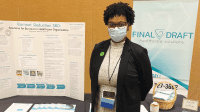
Built to fit

ANA Enterprise News, October 2024

The evolution of pulse oximetry and its impact on patient care

Reviving reverence for vaccines

Responding to workplace violence

COVID-19 is here to stay

Creating an organization for future generations
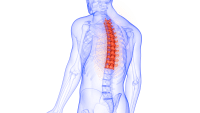
Autonomic dysreflexia in spinal cord injuries
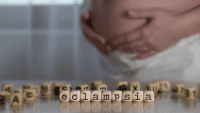
Firearm safety: Nurses’ knowledge and comfort
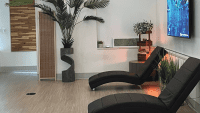
The Secret Garden: A staff-only wellness and respite space
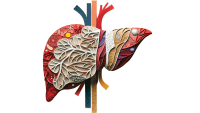
Living donor liver transplant coordinator
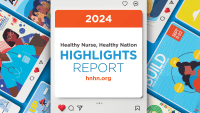
Healthy Nurse, Healthy Nation: 2024 Highlights Report

Nurses build coalitions at the Capitol

Hispanic culture and health

IMAGES
COMMENTS
Nurse-patient assignments help coordinate daily unit activities, matching nurses with patients to meet unit and patient needs for a specific length of time. If you are new to this challenge, try these eight tips as a guide for making nurse-patient assignments.
FREE DOWNLOADS! - 10 Nursing Report Sheets & Templates with SBAR and Brain format: Perfect for Med-Surg, ICU, Tele, Step-Down, and ER units.
The patient acuity tool addresses the important issue of unbalanced nurse-patient assignments and helps nurses influence decision-making in their organizations. Patient assignments can lead to dissatisfaction among nursing staff, especially when they’re not consistent, objective, and quantifiable.
Easily download free nursing school templates for your pharmacology cards, nursing care plans, and nursing concept maps. No charge, no email address required, no strings attached. Print immediately or fill in your template on your computer and print for easy note taking, homework help, or studying.
Download our instantly printable Nursing Staffing Assignment and Sign In Sheet Template which provides you with a log-in sheet where you give detailed information about the unit layout of your patient flow.
Most nurses expect patient assignments to be equitable, with each nurse bearing a fair share of the workload so all patients can receive excellent care. Nurses’ job satisfaction depends partly on their workload and their perceived ability to deliver high quality care.